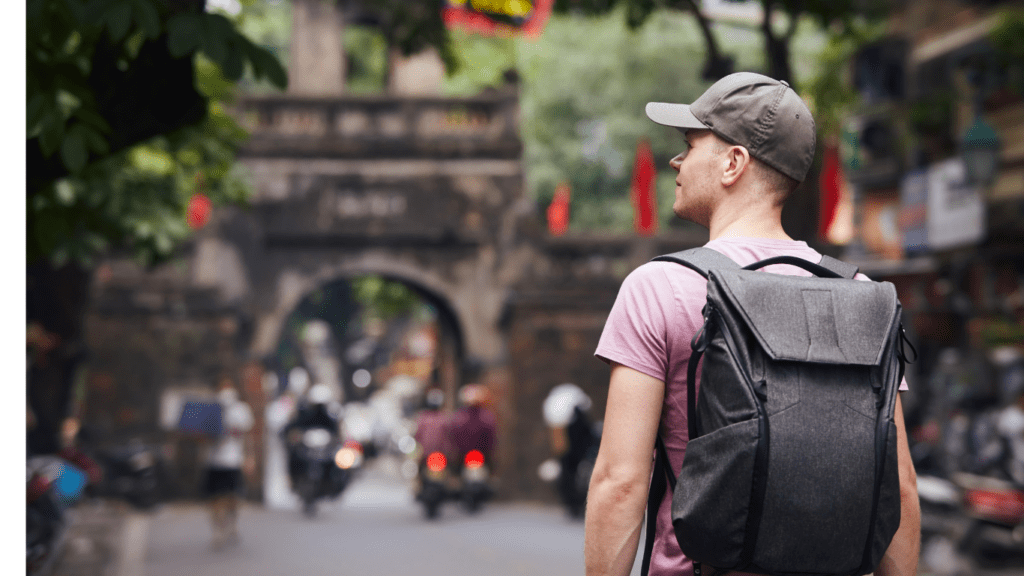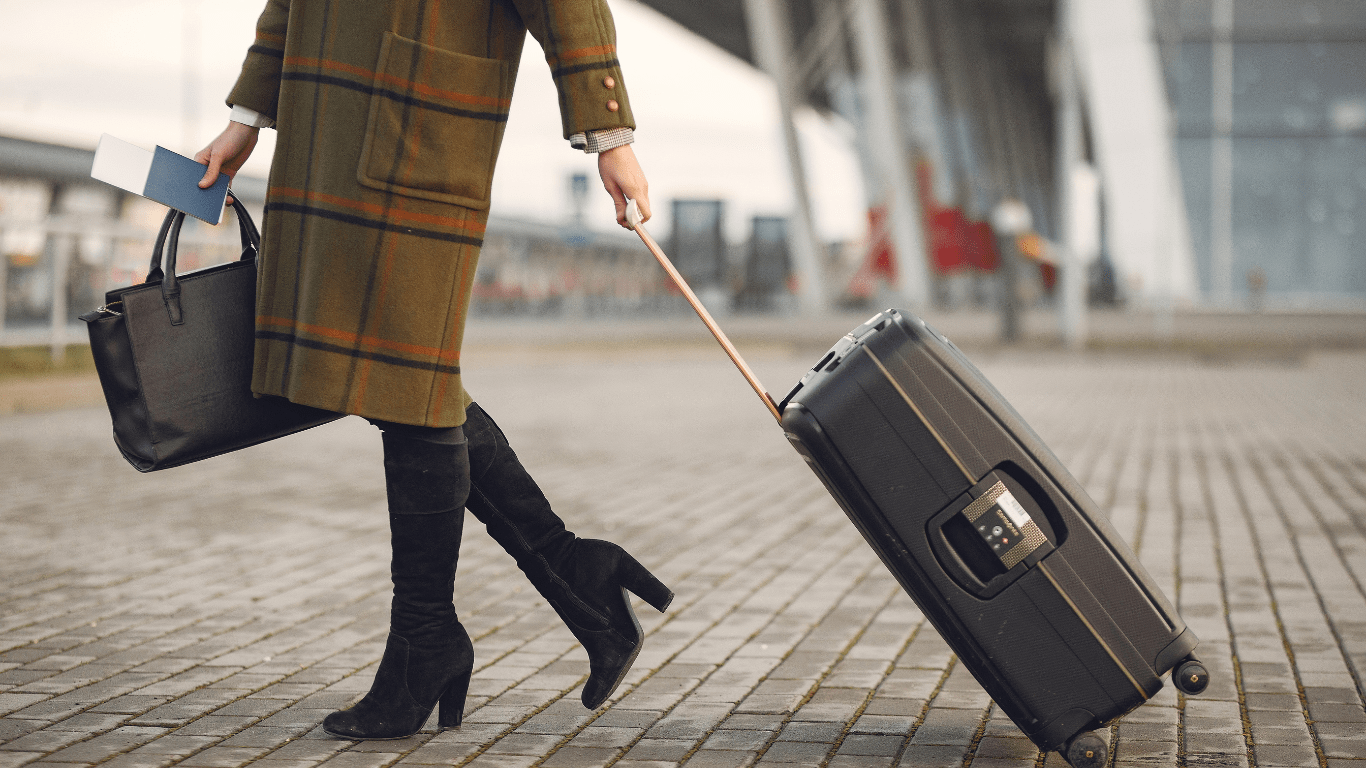Embracing the Art of Slow Travel
What Is Slow Travel?
Slow travel is immersing myself in each moment spent in a new destination. Slow travel is about:
- savoring the subtle nuances of a place
- forging authentic connections
- creating lasting memories beyond a mere itinerary
The Philosophy Behind Slow Travel
Slow travel, for me, is a mindful approach. It’s about pausing, breathing, and absorbing the beauty and uniqueness of every place I visit.
This approach leads me to a deeper appreciation of both the world around me and my own self.
The Benefits of Slow Travel
As a passionate advocate of slow travel, I’ve come to appreciate the numerous advantages it offers, enriching my journeys in ways that conventional travel simply cannot match.
Let’s delve into the specific benefits of embracing the art of slow travel:
1. Immersion in Local Culture
Immersing myself in the local culture is one of the most rewarding aspects of slow travel.
Rather than skimming the surface like a hurried tourist, taking the time to savor each moment allows me to truly connect with the essence of a place.
From engaging in meaningful conversations with locals to participating in age-old traditions, every interaction becomes an opportunity for genuine cultural exchange.
By immersing myself in the local way of life, I not only deepen my understanding of different cultures but also foster a sense of empathy and appreciation for diversity.
2. Environmental Impact
One of the key benefits of slow travel is its minimal environmental impact compared to traditional modes of travel.
By opting for sustainable transportation options like trains or bicycles and choosing eco-friendly accommodations, I reduce my carbon footprint and contribute to the preservation of the environment.
Embracing a slower pace also allows me to explore destinations more mindfully, appreciating the natural beauty and ecosystems without adding undue strain on the environment.
By prioritizing sustainability in my travel choices, I play a small yet meaningful role in protecting the planet for future generations.
3. Personal Growth and Mindfulness
Slow travel serves as a catalyst for personal growth and mindfulness, offering moments of reflection and self-discovery amidst the hustle and bustle of everyday life.
By slowing down and immersing myself in the present moment, I cultivate a deeper sense of awareness and appreciation for the world around me.
Embracing the unknown, stepping out of my comfort zone, and encountering unexpected experiences all contribute to my personal development.
Through mindfulness practices such as meditation in serene landscapes or journaling about my travel experiences, I nurture a deeper connection with myself and the world, fostering a profound sense of fulfillment and inner peace.
Incorporating the principles of slow travel into my journeys has not only transformed the way I explore the world but has also enriched my life in ways I never imagined.
The holistic benefits of immersion in local culture, reduced environmental impact, and personal growth through mindfulness make slow travel a truly transformative and enlightening experience worth cherishing.
Planning Your Slow Travel Experience
Choosing Your Destination Wisely
When planning my slow travel experience, I always begin by carefully selecting my destination.
I focus on places that resonate with me on a deeper level, offering rich cultural experiences and opportunities to connect with the local community.
It’s essential to choose destinations that align with my values and interests, ensuring a meaningful and fulfilling journey.
Long-Term Accommodations
In my slow travel adventures, I prioritize long-term accommodations to immerse myself fully in the destination.
Opting for extended stays allows me to establish a sense of routine, explore the area at a leisurely pace, and develop a deeper understanding of the local way of life.
Staying longer also enables me to form genuine connections with residents and truly experience the essence of the place.
Building a Flexible Itinerary
Flexibility is key when constructing my slow travel itinerary. Instead of overcrowding my schedule with activities, I prefer to leave room for spontaneity and serendipitous experiences.
By maintaining a flexible plan, I can embrace unexpected opportunities, engage in meaningful interactions, and savor each moment without feeling rushed.
This approach enhances my travel experience, allowing me to fully appreciate the beauty and authenticity of every destination.
Budgeting for Slow Travel
When it comes to slow travel, budgeting plays a crucial role in ensuring a sustainable and enriching experience.
Here are some key strategies to effectively manage your finances while savoring each moment of your journey.
1. Saving Money with Extended Stays
Extending your stay in one location is a smart way to save money while immersing yourself deeper in the local culture.
By opting for long-term accommodations like apartment rentals or homestays, you can often negotiate better rates and access amenities that make your stay more comfortable.
This approach not only helps you cut down on accommodation costs but also allows you to establish a sense of routine and familiarity in a new place.
2. Economical Modes of Transportation
Choosing budget-friendly transportation options is essential for slow travel enthusiasts.
Embrace modes of transport that not only fit your budget but also offer a more immersive experience.
Opt for local buses, trains, or shared rides to explore your surroundings authentically while keeping your travel costs in check.
Additionally, consider walking or cycling within a destination to not only save money but also to engage more intimately with the local environment.
3. Spending Wisely on Experiences
While it’s important to manage your finances, allocating a portion of your budget for meaningful experiences is key to enhancing your slow travel journey.
Invest in activities that resonate with your interests and values, such as cultural workshops, eco-friendly tours, or community volunteering opportunities.
By prioritizing quality experiences over material possessions, you can create lasting memories, support local initiatives, and deepen your understanding of the places you visit.
As I embrace the art of slow travel, diligently budgeting for my adventures allows me to make the most of each moment while staying mindful of my financial well-being.
By following these budgeting tips, I can cultivate a fulfilling and sustainable travel experience that aligns with my values and enriches my connection to the world around me.
Must-Have Experiences in Slow Travel
Engaging with Local Communities
Engaging with local communities is a vital aspect of slow travel as it allows for authentic cultural exchanges and meaningful connections.
When I travel slowly, I make it a point to interact with locals, whether through attending community events, participating in local traditions, or simply striking up conversations.
This enriches my travel experience by providing insights into the local way of life and fostering a sense of belonging in a foreign land.
By immersing myself in the community, I not only learn about their customs and traditions but also gain a deeper appreciation for the place I am visiting.
Learning Local Crafts and Traditions
Learning local crafts and traditions is a unique way to delve into the cultural heritage of a destination during slow travel.
I enjoy seeking out opportunities to engage in traditional craft workshops, such as pottery-making, weaving, or traditional cooking classes.
y learning these skills from local artisans, I not only support the preservation of cultural traditions but also gain a hands-on understanding of the local way of life.
This immersive experience allows me to connect with the destination on a deeper level, creating lasting memories and a greater appreciation for its rich heritage.
Taking the Scenic Route
Taking the scenic route is a must-do experience in slow travel as it allows for a leisurely exploration of the natural beauty of a destination.
When I opt for the scenic route, I prioritize secondary roads, walking paths, or cycling routes that offer stunning views and hidden gems off the beaten path.
This slower pace of travel not only allows me to savor the landscape but also provides opportunities for serendipitous discoveries and spontaneous encounters with locals.
By taking the scenic route, I embrace the essence of slow travel, relishing each moment and immersing myself fully in the beauty of my surroundings.
Overcoming Challenges in Slow Travel

Combatting Loneliness on the Road
In slow travel, solo exploration can sometimes lead to moments of solitude that may feel isolating.
To combat loneliness on the road, I recommend seeking out communal spaces such as local cafes, markets, or workshops where you can interact with residents or fellow travelers.
Engaging in group activities like guided tours, cooking classes, or community events can also create opportunities for meaningful connections, enriching your travel experience.
Dealing with Language Barriers
Navigating language barriers while immersing yourself in a new culture is a common challenge in slow travel.
To deal with language barriers effectively, I suggest learning basic phrases in the local language or carrying a translation app to facilitate communication.
Engaging in non-verbal communication, using gestures, and being patient and open-minded can also help bridge the gap in linguistic differences, allowing for meaningful interactions with locals.
Staying Safe in Unfamiliar Places
Ensuring personal safety is paramount when traveling to unfamiliar destinations.
To stay safe during your slow travel journey, I recommend researching the destination beforehand to understand local customs, laws, and potential safety risks.
Keeping important documents secure, staying aware of your surroundings, and avoiding risky situations or areas can enhance your safety while exploring new and unfamiliar places.
Additionally, blending in with the local culture, seeking advice from residents or trusted sources, and having emergency contacts handy are essential safety measures to consider during your slow travel adventures.
Digital Nomadism and Slow Travel
1. Working Remotely While Exploring
As a digital nomad, I embrace the freedom to work from anywhere in the world.
It’s common for me to set up my workspace in a cozy cafe in Paris, a beachfront villa in Bali, or a bustling coworking space in Chiang Mai.
By blending work with travel, I’m not just exploring new destinations but also immersing myself in different cultures, traditions, and lifestyles.
This fusion of work and leisure allows me to delve deeper into the essence of each place, making my slow travel experiences truly enriching.
2. Balancing Work and Leisure
Maintaining a healthy work-life balance is key to enjoying the best of both worlds while on a slow travel journey.
I prioritize my work tasks, allocate specific time slots for work, and then savor moments of leisure to explore the local surroundings.
Whether it’s unwinding at a hidden gem of a cafe, hiking through scenic trails, or simply taking in the breathtaking sunset views, finding this equilibrium between work commitments and leisure activities enhances the quality of my travel experiences.
By creating this balance, I ensure that I can be productive in my work endeavors while also fully immersing myself in the wonders of each destination.
Slow Travel for Families
Making Educational Opportunities
When traveling with families, I find that slow travel offers unique educational opportunities that can’t be matched by conventional trips. One of the main benefits is the chance for kids to immerse themselves in varied cultures, languages, and environments.
By spending more time in one place, children can absorb local customs, try new foods, and interact with people from diverse backgrounds. It’s a hands-on approach to learning that goes beyond what traditional classrooms can provide.
Additionally, exploring museums, historical sites, and engaging in local activities can turn every moment into a valuable lesson that stays with kids for a lifetime.
Planning for Different Age Groups
In my experience, planning for different age groups is essential when embarking on a slow travel journey with family members of varying ages.
For younger children, it’s vital to consider their energy levels and attention spans when choosing activities and accommodations.
Opting for destinations with interactive experiences, outdoor adventures, and kid-friendly attractions can keep them engaged and excited about the trip.
On the other hand, teenagers may appreciate more autonomy and opportunities for independent exploration.
Involving them in the planning process and allowing them to pursue their interests can make the journey more enriching for everyone.
Flexibility is key when catering to different age groups, ensuring that each family member has a memorable and fulfilling travel experience.

About the author:
Christopher is a seasoned writer and integral member of the Virtual Echo Lab team, where he specializes in a diverse array of topics including business, finance, health, lifestyle, and sports. With a keen eye… Learn more



